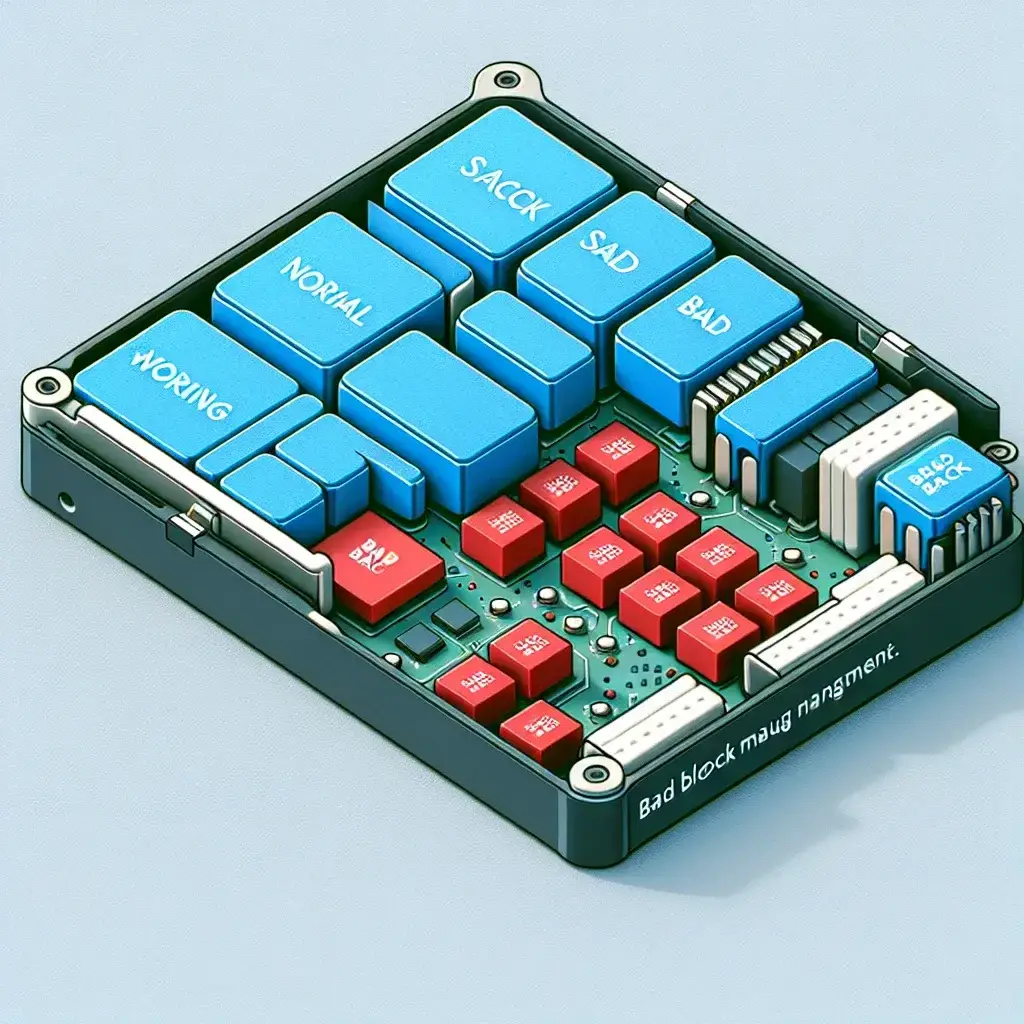Solid-state drives (SSDs) have revolutionized the storage industry with their speed, efficiency, and durability. However, like all storage devices, SSDs are not immune to issues. One of the primary concerns is the occurrence of bad blocks. Bad block management techniques are essential in maintaining SSD reliability and ensuring data integrity. This article delves into the various methods employed to manage bad blocks and enhance SSD reliability.
Understanding Bad Blocks
A bad block in an SSD is a sector of memory that is no longer reliable for storage or retrieval of data. Several factors can lead to bad blocks, including:
- Manufacturing defects
- Wear and tear over time
- Logical errors during write operations
Bad blocks can significantly impact SSD performance and reliability if not managed properly.
Bad Block Management Techniques in SSDs
1. Wear Leveling
Wear leveling is a technique used to prolong the life of an SSD by distributing write and erase cycles evenly across the memory cells. This prevents specific blocks from wearing out prematurely.
Types of Wear Leveling
- Dynamic Wear Leveling: Moves data only from blocks that are currently in use.
- Static Wear Leveling: Moves data from all blocks, whether in use or not, to ensure uniform wear.
2. Bad Block Mapping
Bad block mapping involves marking bad blocks and redirecting data intended for the bad blocks to spare blocks. This ensures that no data is lost.
- Primary Mapping: Happens during the manufacturing process where blocks identified as faulty are marked as bad.
- Runtime Mapping: Involves identifying bad blocks during the operational life of the SSD and mapping them out in real-time.
3. Error Correction Codes (ECC)
ECC helps detect and correct data errors within blocks. When a bad block or error is detected, ECC algorithms correct the data, ensuring data integrity.
- BCH Code: Uses polynomial equations to detect and correct errors.
- LDPC Code: Employs complex algorithms for higher accuracy in error detection and correction.
4. Garbage Collection
Garbage collection is a process that identifies obsolete data and clears it, making room for new data. This helps manage bad blocks by freeing up space and reducing write amplification.
5. TRIM Command
The TRIM command enables the operating system to inform the SSD which blocks of data are no longer in use and can be wiped internally, further aiding in efficient bad block management.
6. Over-Provisioning
Over-provisioning involves reserving a portion of the SSD’s storage capacity for replacing bad blocks. This reserved space ensures that the SSD maintains its performance even as bad blocks accumulate.
| Technique | Description | Benefit |
|---|---|---|
| Wear Leveling | Distributes write/erase cycles evenly | Prolongs SSD life |
| Bad Block Mapping | Redirects data from bad to spare blocks | Ensures data integrity |
| Error Correction Codes (ECC) | Detects and corrects data errors | Maintains data accuracy |
| Garbage Collection | Clears obsolete data | Frees up space |
| TRIM Command | Informs SSD of unused data blocks | Improves efficiency |
| Over-Provisioning | Reserves space for bad blocks | Maintains performance |
The Role of Firmware in Bad Block Management
Firmware plays a crucial role in implementing and managing all these techniques. It ensures seamless execution and coordination between various processes, enhancing the overall reliability of SSDs.
Conclusion
Bad block management techniques are integral to the reliability and performance of SSDs. By employing methods such as wear leveling, bad block mapping, ECC, garbage collection, TRIM, and over-provisioning, manufacturers can ensure that SSDs remain efficient and durable. Understanding these techniques can help users make informed decisions when selecting an SSD for their needs.

